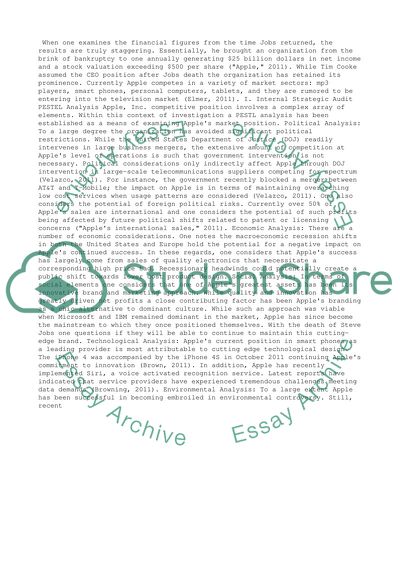Cite this document
(“Apple Strategic report Essay Example | Topics and Well Written Essays - 2750 words”, n.d.)
Retrieved from https://studentshare.org/business/1398798-apple-strategic-report-assignment
Retrieved from https://studentshare.org/business/1398798-apple-strategic-report-assignment
(Apple Strategic Report Essay Example | Topics and Well Written Essays - 2750 Words)
https://studentshare.org/business/1398798-apple-strategic-report-assignment.
https://studentshare.org/business/1398798-apple-strategic-report-assignment.
“Apple Strategic Report Essay Example | Topics and Well Written Essays - 2750 Words”, n.d. https://studentshare.org/business/1398798-apple-strategic-report-assignment.


